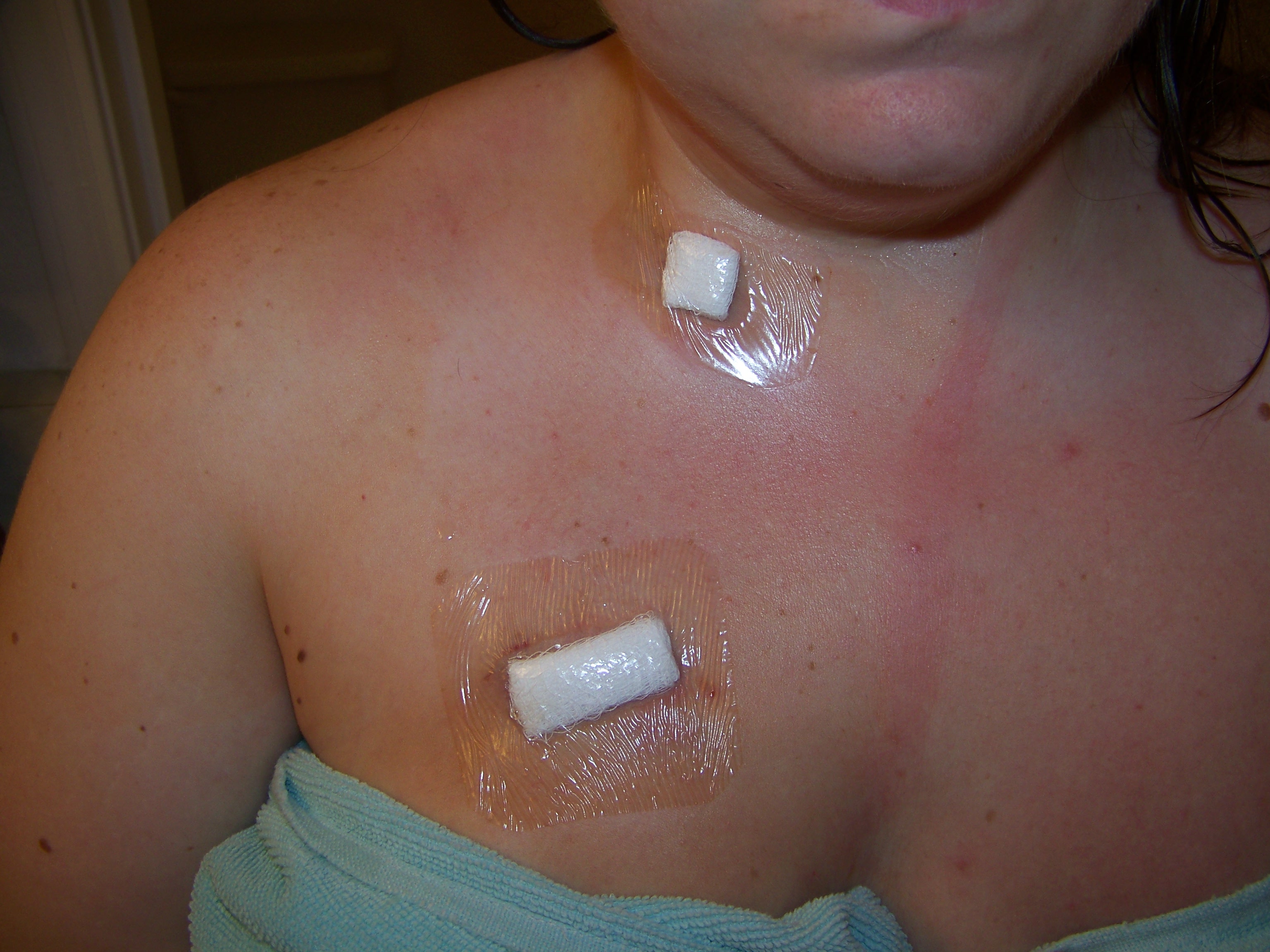New Port for wife
Discussion Board › Forums › General Discussion › New Port for wife
- This topic has 4 replies, 5 voices, and was last updated 8 years, 3 months ago by
marions.
-
AuthorPosts
-
August 23, 2016 at 11:38 pm #89326
marions
Moderatorwhatnow….here we go:
Regular IV catheters
A regular IV catheter is a tiny plastic tube about an inch long with a plastic hub. A needle is used to put the catheter into a vein in your forearm or hand, and then the needle is removed, leaving the catheter in the vein with the hub outside the skin. A regular IV catheter can only stay in for a few days, at most, so if you need to be treated over weeks or months, you will need many IVs.
What’s a port?
A port is a type of central venous catheter. It also called an implantable venous access port. It’s a small drum made of plastic or metal with a thin tube (called a line) going from the drum into a large vein. Ports are permanently placed under the skin of the chest or arm during surgery. The drum has a silicone septum (self-sealing membrane) across the top and special needles are stuck through the skin into the septum to use the port. Single and double ports are available. A single port is shown in the picture below; a double port looks like 2 drums attached to each other.
Additional explanation can be found here:
http://www.cancer.org/treatment/treatmentsandsideeffects/treatmenttypes/chemotherapy/central-venous-cathetersGood luck on Thursday.
Hugs,
MarionAugust 23, 2016 at 7:16 pm #89325whatnow
Spectatorwhat is the difference in a central line and a port? I have to get a port this Thursday.
August 10, 2015 at 12:26 pm #89324 gavinModerator
gavinModeratorHi Karen,
Many many thanks indeed for posting all of that. I know that not only will it be very helpful to Gonzalez but it will be of great help to so many other people as well.
Thanks loads.
Gavin
August 9, 2015 at 10:59 pm #89323 karendSpectator
karendSpectatorHi 6gonzalez6,
There are many individuals on this discussion board with personal experience related to port-a-caths that may be able to give you more detailed info.
From my experience as an oncology nurse, here are some brief answers to your questions:
1. What has worked for you to sooth the area before treatment?
Nurses can apply a cream to the site of the port-a-cath (which is implanted under the skin) prior to accessing the port with a needle. (Accessing is when a huber needle is inserted into the hard part of the port under the skin). This cream is called Emla cream.
2. Any possible issues or things to look for?
The main issues to watch for are signs of symptoms of infection at the site of the implanted port. A new port will have two incision areas that are generally closed with some internal sutures and dermabond, or a type of skin super glue. Signs of infection at the site would be: redness, swelling, pain, or drainage from the incision that is profuse, yellow/white/green. Also after treatment of blood draws when the needle is inserted into the port, any swelling around the needle is cause for concern. A lack of blood return (the ability of the nurse to draw blood back into a syringe from the port) or difficulty flushing saline or fluid into the port when it is accessed should be investigated.
3. Any special care?
When the port-a-cath has a needle in it, it will be covered with a sticky clear dressing that should be kept dry. After the site has healed, there will be two small scars on the chest and slightly above the port insertion site and no special care will be needed.
4. Does it ever need to be changed?
The port a cath will not have a needle in it unless it is being used. That needle is changed (along with the dressing) every 7 days. The caps on the tubing are to be changed every time blood is drawn from the port. Your wife will perhaps remain accessed if she is getting chemo in an outpatient infusion department, and she is coming for a number of days. Sometimes the nurses will leave the needle in, and remove it a few days later after consecutive days of chemo. They may also remove it after the infusion, then re-access the next day.
I hope this helps!!!
Here is a helpful link for you as well along with a picture of what the new port a cath sites looks like right after the procedure to place it.

-KarenD
August 9, 2015 at 4:13 pm #115826gonzalez6
SpectatorQuestions on a port put in for my wife:
1. What has worked for you to sooth the area before treatment?
2. Any possible issues or things to look for?
3. Any special care?
4. Does it ever need to be changed?
-
AuthorPosts
- The forum ‘General Discussion’ is closed to new topics and replies.
